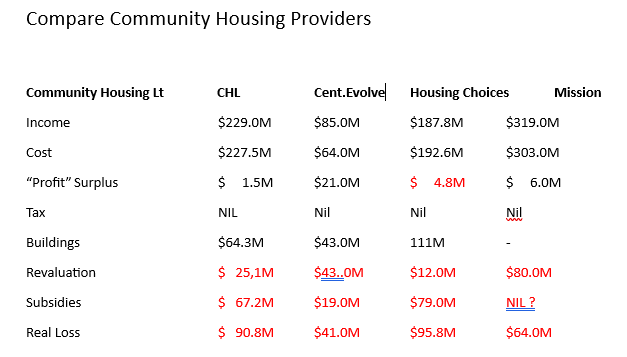This is part of a series of sessions of Finance for Pensioners and solutions to the Housing and Rental Crisis
The ABC asked for contribution of the public to solve the Housing and Rental Crisis
I sent them the email below with full details of the Housing Affordability Trust (redacted)
No acknowledgement or response . Like the government, the ABC does not seem to be interested to solve the problem-
Dear ABC
1.Co-operation State and Federal Government
There is no co-operation between State and Federal governments. Prior to the last election there was not even a Federal Minister for Housing in the Labor government. I suggested to Jim Chalmers that they create one and whether it was my suggestion or not ( I do not know because I never got a response) , there is now a Federal Minister for Housing in Julie Collins.
Housing is essentially the responsibility of State Government and whenever there is a problem, State and Federal Government blame each other
I have written to Housing Tasmania and State and Federal Governments and State and Federal treasuries with strategies to solve the Affordable Housing Crisis in Tasmania and Australia. Apart from Peter White , Head of Housing Tasmania ,we have had no support from any of the organisations.
Government , in the last budget, has now promised to build $10,000 houses and set aside $350M . That is $35,000 per dwelling which will disappear like snow in the sun to feed consultants, lawyers and administration. ( Remember NDIS). The government paid Price Waterhouse Cooper 575M over the last 2 years.
In 1991 I put a proposal to solve the Housing Crisis to Tom Burns, then deputy premier of Queensland and Housing Minister. The proposal required a government guarantee and was improved in principle by Queensland Treasury. However, State Government could not provide guarantees, only the Federal Government could. I walked away from the proposal when fights between State and Federal Government and “Yes Minister “ bureaucratic nonsense and some personal problems became too much.
- Superannuation Funds and Banks
The government in it’s National Housing Accord now relies on the support of the Superannuation Funds. It is virtually impossible to build Affordable Rental Accommodation with affordable rent and still make a profit. But Superannuation must make a profit under their articles. Do you think that the Superannuation Funds would be interested without relying on giant subsidies. The end result will be that government will subsidise superannuation funds to make a profit like they are subsidising the banks to make a profit. I estimate that discussions will take 5 years. Banks are also not the solution. In recent discussions with Westpac their response was and I quote “We do not do Affordable Housing”
So what is the solution?
Let us find a solution that is not dependant on the government, banks and tax payers.
- Where should the money come from.
Approximately 16% of Australian or 4.2 million people are over age 65 and this will increase to 10 million in 50years time. 64% of these people are on a full or part pension. Assets of this group of people are $2000,000,000,000 ( 2 thousand Billion). If 1% of these people are interested in providing affordable accommodation it would provide $20 Billion or at $250,000 per dwelling 80,000 dwellings.
- Local scale
We have 2 demographics in mind: Pensioners and First Home Buyers
The objective is to provide a safe and secure investment for retirees and an opportunity for first homebuyers to acquire a home under a 5 years “Lease and Option to Buy” strategy. During the 5 years the strategy will provide affordable long term rental accommodation for first home buyers and other retirees.
Retirees , specifically on a single pension are taxed at 73% if they earn more than $212 per fortnight ( 50% in pension, SAPTO 12.5%,LIR 1.5%,tax 30%, medicare 2%). . You are losing 73% in the dollar if you have more than $301,000 in your super. Even less ($187,000) when inflation and deeming rates increase by 1%
If you get an extra 1% on bank deposit it is eaten up by inflation and if the government increases the deeming rate by the same amount you lose an extra $77FN in your pension because of the deeming rate. Inflation is bad for retirees but good for the government
There is some hope as Centrelink does not assess capital gains and section 40 depreciation allowances as income.
For every dollar earned above $212FN you retain 27cts but 85cts for $1 of Capital gain.
$1 capital gain = $3.15 normal income which gives the strategy;
Retiree buys home at 80% of valuation and leases to First Home Buyer and sells again to the developer at the same price + 3%/year capital Gain in 5 years time.
The developer sells to the first home buyer at original valuation + 3%/year. The retiree gets the capital gain and has a return which is 1600% better than putting money in the bank.
Australian Scale :
THE HOUSING AFFORDABILITY TRUST
Redacted because of fear that superannuation funds and the Price Waterhouses of the world use the exclusive and inventive ideas to make profits for themselves and destroy the purpose of the plan to solve the Housing and Rental Crisis as a not-for-profit organisation.
